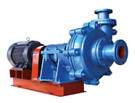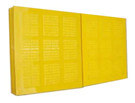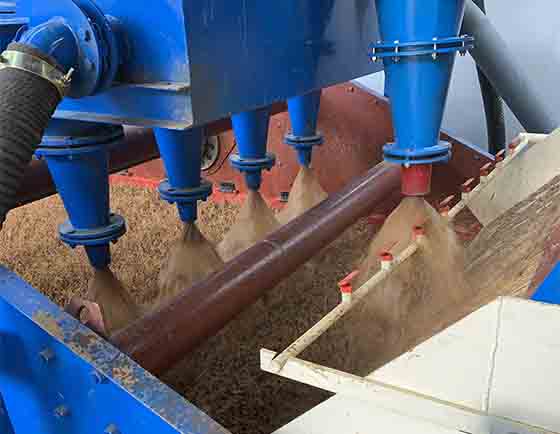Hot Product

- Hydrocyclone Group
Hydrocyclone group is widely used in coal preparation plant...

- Slurry Pump
Slurry pump is mainly used in mining, power plant, dredging, metallurgy...

- Polyurethane Dewatering Screen Panel
In addition to the performance of...
Effect Of Feed Concentration On Cyclone Separation Performance
Date: 2025-07-04 From: Longding Author: admin
Classification efficiency and fraction composition are crucial indicators of hydrocyclone separation performance. Improving hydrocyclone classification efficiency under high-concentration feed conditions requires minimizing the effects of interference settling. Given fixed cyclone process parameters and feed particle size, this can only be achieved by varying the inlet pressure and feed concentration.

In the solid-liquid two-phase flow of a hydrocyclone, the interaction between solid particles and the liquid medium varies with slurry concentration. At low concentrations, particles can settle freely under the influence of the effective driving force and fluid resistance, and the forces between particles are negligible. As the solid concentration increases, the interactions between particles gradually affect the movement between the solid and liquid phases, causing interference settling of the particles. If the slurry concentration continues to increase above a certain critical value, the interaction between the solid and liquid phases may become secondary, and the collisions between particles become the main source of force on the particles.
Feed concentration significantly impacts the classification efficiency of a hydrocyclone. Under high-concentration feed conditions, the classification efficiency deteriorates significantly, from over 50% at a 30% feed concentration to 20% at a 70% feed concentration. While varying the feed frequency can improve the classification efficiency of a hydrocyclone at high concentrations, the effect is limited. Furthermore, under high-concentration feed conditions, a feed frequency exceeding 45Hz can easily lead to grit clogging. This occurred during this experiment, demonstrating that slurry transport can become difficult under high-concentration feed conditions, especially when fed simultaneously at high frequencies.
Therefore, in order to improve the classification efficiency of the hydrocyclone under high-concentration feed conditions, it is necessary to try to reduce the feed concentration or the classification concentration. Then, combined with variable frequency feed, the classification efficiency of the hydrocyclone can be further improved to reach the current industrial application level.
Leave a Message
Here you can submit any questions and we will get back to you as soon as possible. We will not disclose the information you submit to anyone, please rest assured.


Inquiry